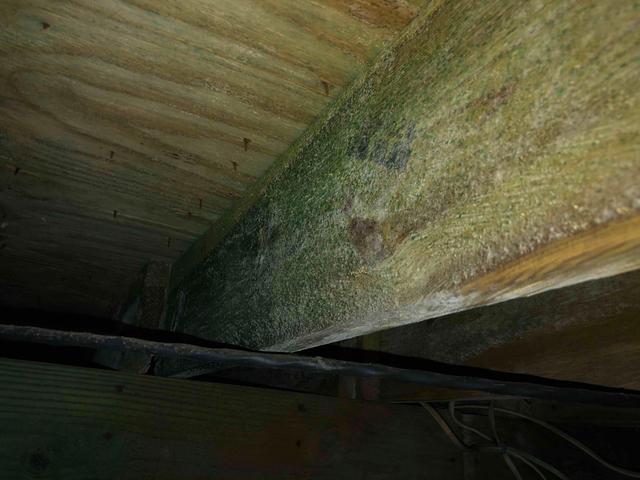
Mold and Mildew Growth
Mold and mildew have grown on many of the wooden floor joists in this crawl space. Mold growth can occur on any organic material in the crawl space so long as the relative humidity reaches over 60% during warmer temperatures. Mold spores and musty odors can then rise into the home and irritate those with allergies and asthma.

Exposed Dirt Flooring
The dirt flooring of this crawl space remains exposed, allowing the earth's moisture to rise into the crawl space and affect the relative humidity and environment. Excessive moisture can lead to condensation, mold growth, and moisture damage to materials. This muddy and damp environment also makes it difficult for service persons to maneuver around the crawl space.

Efflorescence on Porous Walls
The walls of this crawl space were made with porous cinderblocks, and efflorescence is visible along the walls. This suggests that moisture seeped through these walls, bringing along with it the inner salts and sediments to the surface, creating a chalky, powdery substance on the cinderblocks. The moisture seeping through can affect the relative humidity and environment.

Open Vents on Foundation Walls
Open vents lined the foundation walls of this crawl space. This is allowing the outside air and moisture to freely enter the crawl space, where it becomes trapped. During the cooler season, the invading air can make the upper floors cold and uncomfortable, while in the warmer season the moisture can raise the relative humidity. Cutting off the crawl space from any outside influence will help lower energy bills and make the home healthier and more comfortable.

